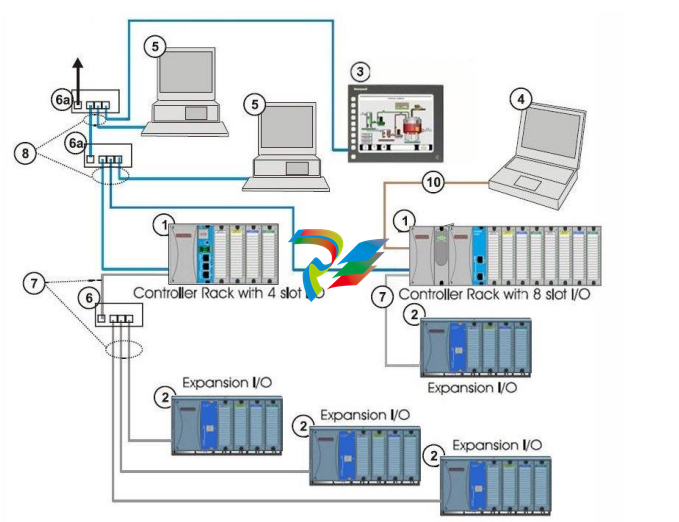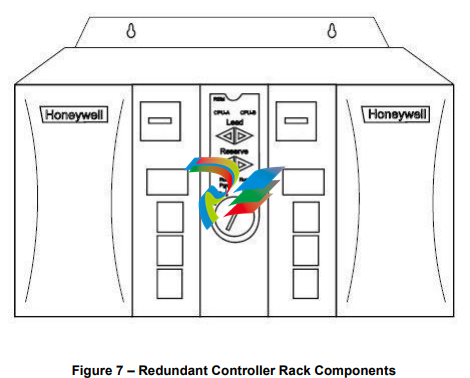
HoneywellHC900 Process & Safety Controller User and Installation Manual
This illustration includes key-numbers that identify components that are described in Table 2
CAUTION
Communications lockout is possible in high network traffic conditions.
Extraneous traffic is possible when sharing bandwidth with other devices. We recommend putting the
controller on a private network segment. Failure to do so could, in high traffic cases, result in
communications lockout requiring the controller to be power-cycled.

Note: The HC900 is equipped with an Ethernet port as a standard feature (two Ethernet ports on the C70
& C75 CPU). These ports can function simultaneously as slave and master communications ports.
The dual Ethernet ports (C70 & C75 CPU’s) can be configured for redundant operation to a host.
If the host device does not have the inherent capability to recognize a network failover, the
Honeywell HWIOPC Server would be used to perform this functionality.
The dual Ethernet ports will not operate in a redundant configuration through a gateway to a
Host / server on another subnet. While both the E1 & E2 Ethernet can be configured with a default
Gateway address, only the E1 port will actually communicate across a gateway to another subnet
Hardware Components
This section contains general descriptions of each of the major components of the HC900 system.
For environmental specifications, refer to the section on Pre-Installation Planning.
HC900 Controller Rack
An HC900 Controller ("local rack") is shown in the following figure. As indicated in this figure, the Controller Rack
includes:
1. Rack, available in 4- 8-, or 12-slot versions
2. Power Supply
3. Controller Module
4. Grounding bars (for I/O wiring; optional)
5. Input/Output modules.
6. I/O Terminal Blocks

HC900 Redundant Controller Rack
A HC900 Redundant Controller is shown in the following figure.
1. Rack
2. Redundancy Switch Module (RSM) . Interface between Lead/Reserve controllers.
3. Lead/Reserve controllers. Two C75 CPUs, designated “CPU-A” (left), “CPU-B” (right).
4. Two 900P01-xxxx or 900P02-xxxx Power Supplies.





























































































































